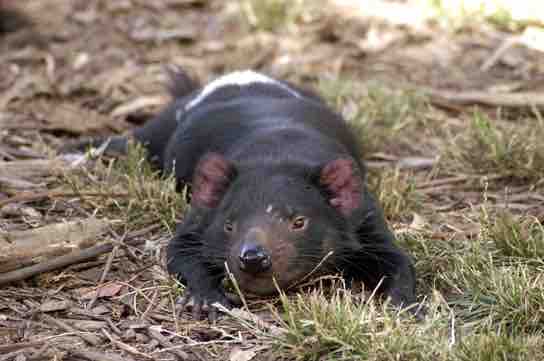Living Mammals
Living mammals can be classified into three major classes: eutherians, monotremes, and metatherians. The eutherians, or placental mammals, and the metatherians, or marsupials, together comprise the clade of therian mammals. Monotremes form their sister clade.
There are three living species of monotremes: the platypus and two species of echidnas, or spiny anteaters. The leathery-beaked platypus belongs to the family Ornithorhynchidae ("bird beak"), whereas echidnas belong to the family Tachyglossidae ("sticky tongue"). The platypus and one species of echidna are found in Australia; the other species of echidna is found in New Guinea. Monotremes are unique among mammals as they lay eggs rather than giving birth to live young. The shells of their eggs are not like the hard shells of birds, but are leathery, similar to the shells of reptile eggs. All monotremes possess a cloaca which serves as the opening for the intestinal, reproductive, and urinary tracts. Additionally, monotremes have no teeth.
Marsupials are found primarily in Australia,although the opossum is found in North America. Australian marsupials include the kangaroo, koala, bandicoot,Tasmanian devil, and several other species . Most species of marsupials possess a pouch in which the very premature young reside after birth, receiving milk and continuing to develop. Marsupials differ from eutherians in that there is a less complex placental connection. The young are born at an extremely early age and latch onto the nipple within the pouch.

Tasmanian devil
The Tasmanian devil is one of several marsupials native to Australia. (credit: Wayne McLean)
Eutherians are the most widespread of the mammals, occurring throughout the world. There are 18 to 20 orders of placental mammals. Some examples are Insectivora, the insect eaters; Edentata, the toothless anteaters; Rodentia, the rodents; Cetacea, the aquatic mammals including whales; Carnivora, carnivorous mammals including dogs, cats, and bears; and Primates, which includes humans. Eutherian mammals are sometimes called placental mammals because all species possess a complex placenta that connects a fetus to the mother, allowing for gas, fluid, and nutrient exchange. While other mammals possess a less complex placenta or briefly have a placenta, all eutherians possess a complex placenta during gestation.
A red fox
Red foxes are eutherian (placental) mammals because the mothers nourish their young via a placenta during fetal development. The placenta enables a mother to exchange gases, fluids, and nutrients with the growing embryos.